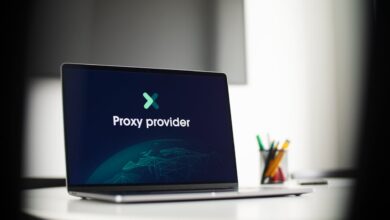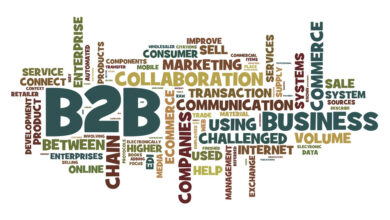What Is a General Ledger? Everything you need to know

What Is a General Ledger?
A general ledger is the master accounting document that contains all of the accounts a business has—meaning it records all of the transactions made over the life of a company. The general ledger includes transactions separated by type: assets, liabilities, equity, revenue, and expenses. A general ledger is used as a reference, storing all of a business’s financial information, and is also used to create a variety of financial statements.
When it comes to business accounting, there are several documents and reports that are essential—not only because they’re used to gain financial insights regarding the growth of your business, but also because they serve as a record of your business’s financial history. Perhaps one of the most important of these accounting reports is the general ledger.
If you’re wondering, “what is a general ledger?”—this guide is here to help. We’ll break down a general ledger definition and how this document works, offer general ledger examples, and finally, discuss why this accounting document is so important to your business.
General Ledger Definition
Before we dive into the details regarding this accounting document, let’s start with the basics and answer the question: What is a general ledger?
In essence, the general ledger is the core of your accounting system, serving as a record of all of your accounts and detailing all of the transactions your business makes. Typically, each of your transactions within the general ledger is broken up into accounts, categorized as assets, liabilities, equity, revenues, and expenses—as designated within your business’s chart of accounts.
The general ledger is a reference document and resource for creating financial statements to evaluate the health and progress of your business.
How the General Ledger Works
Next, let’s break down how the general ledger works.
As you go about your day-to-day business operations, you make entries within your Accounts Receivable Software—checks, invoices, and deposits. Each of these transactions is recorded in your general ledger, which is known as “posting transactions.” For example, if you write a check to pay rent, that transaction will hit two accounts in your general ledger.
First, it will credit (lower the balance of) your business bank account and debit (increase the balance of) your rent expense account. This equal debiting and crediting is part of the double-entry accounting method. This method ensures that your general ledger is always in balance, maintaining the equation:
Assets = Liabilities + Equity
It’s important to note that not every transaction will hit your general ledger. There are a few transactions that are “non-posting,” and won’t post to the general ledger. To explain, we break down posting vs. non-posting as detailed below:
So, what makes these six transactions non-posting? Let’s explain:
Estimates
When you make an estimate, you’re telling your customer what you plan on selling them and what the price will be—however, you have not made a sale yet, and therefore, this transaction will not be recorded in your general ledger.
Delayed credit/charge
These transactions are ways for you to keep track of services or items for which you want to invoice a customer at a later date. Once again, in this case, no sale has yet been made, so these transactions are not posted.
Purchase order
The flipside of an estimate, this is a transaction that you give a vendor to let them know what you plan on buying from them and at what cost—however, a sale has not yet been made and therefore, the transaction is not posted in the general ledger.
Time tracking
Time transactions track time that will eventually show up on an employee’s paycheck or time for which a client will be invoiced at a later date; however, there is no actual exchange of payment at this point, so there is no posting.
Statement
Unlike the other transactions we’ve discussed, a statement isn’t a transaction. Instead, a statement is a list of transactions that have already been posted to your general ledger.
General Ledger Accounts
Each transaction you post is recorded in the appropriate account, or category. To properly understand your business’s general ledger, let’s explore what each of these categories means:
Assets
Assets are items that your company owns, including cash, accounts receivable, equipment, and more.
Liabilities
Liabilities are what your business is responsible for paying, including accounts payable, loans payable, etc.
Stockholders’ equity
Equty is what the business partners or stockholders own—and is determined by taking the difference of the value of the assets and the value of the liabilities. Equity can include common stock or retained earnings.
Operating revenue
Operating revenue is the income your business receives from your operations, aka your sales.
Operating expenses
Operating expenses are the costs you incur to keep your business running, including rent, utilities, salaries, etc.
Non-operating revenue and gains
Non-operating revenue and gains are income your business receives that is not related to sales—for example, income from investments.
Non-operating expenses and losses
Similar to non-operating revenue, non-operating expenses and losses are expenses your business incurs that are not related to running the business, like interest expenses.
These terms are probably familiar—as they’re used in a variety of other accounting reports and financial statements. Again, this is one of the reasons that the general ledger is so essential to your processes.
For example, assets, liabilities, and equity are the three pieces that make up your balance sheet. Your balance sheet lists your permanent accounts, aka the ones that will not be closed out at the end of the year.
The remaining four accounts on the list above are what you’ll find on your profit and loss or income statement. Unlike your balance sheet, these reports include temporary accounts, as they will be closed at the end of the year. You’ll begin the next year with no balance in all of these categories.
On the other hand, any balances you end the year with are combined and usually entered into “stockholders’ equity” on the balance sheet.
General Ledger vs. Trial Balance
A trial balance is a worksheet that shows the totals in each account in a business’s chart of accounts. In other words, your general ledger is a record of all of your accounts, and a trial balance is a list of the balances that belong to each account.
A trial balance document typically features two columns—one for debit balance and the other for credit balance. If you calculate the totals of each column, they should be equal. If unequal, it usually indicates a clerical error, like transposing a number or a miscalculation.
Trial balances are not used by many small business owners today. They were more useful when calculations were done manually on paper, but have since been mainly replaced by accounting software.
General Ledger vs. Journal
A journal is a book of original transaction entries recorded in chronological order. The difference between a general ledger and a journal is comprehensiveness.
A journal is similar to a general ledger in that it contains columns for dates, account names, transaction description, debit or credit amount, and a reference number. A general ledger, however, is more formal and holds additional information, including assets, liabilities, revenue, and equity.
Accounting software makes it easy to use both general ledgers and journals. If you enter a journal entry for a one-time marketing transaction, for example, it will also post to your general ledger.
Why a General Ledger Is Important for Your Small Business
If you don’t have to review your general ledger frequently, why is this report so important? Well, this accounting report is a simple way to view your business financials in their entirety.
Therefore, the general ledger can be one of the most useful accounting tools you have, allowing you to:
Ensure your bookkeeping is accurate
A glance through your general ledger can show where you might have made a mistake on data entry or where numbers aren’t adding up. You can review this document to make sure that everything posting is correct. Plus, if you do, at some point, locate an accounting error within your books, you can consult the general ledger to determine the cause of the issue and rectify it.
Track financial expenditures
Managing your business’s spending can be difficult, especially if you’re not immediately looking at transactions and how everything is adding up. By reviewing the general ledger, however, you can see all of your spendings, how it’s broken up, as well as ensure that the spending you’re doing is being tracked and recorded correctly.
Track your business transactions
Keeping your business and personal expenses separate is essential. Still, a crossover can happen. For example, if you deposit personal funds into your business bank account to cover costs, you can use the general ledger to make sure that those deposits aren’t recorded as income, and those expenses are on the books.
Gain insights into your business’s financial performance
As a record for all of your transactions, the general ledger helps you create other accounting reports. These reports, from the profit and loss statement to the balance sheet, can be used to perform additional calculations that can be useful to determine the state of your business’s financial health. Moreover, the general ledger itself can be used to provide insight when it seems that other, more specific documents aren’t giving you all of the information you need.
The Bottom Line
Understanding and reviewing your business’s accounting reports—like the general ledger—are essential to growing your operations and keeping track of the health of your finances. As the basis of your accounting system, you should understand how a general ledger works, how to generate the report, and what insights can be gathered from it.
Due to the significance of the general ledger, we recommend using an accounting software platform to connect your accounts, record your transactions, and maintain your books. Accounting software lets you automatically generate your general ledger, create additional financial reports, and lessens the likelihood of manual error.
Moreover, accounting software typically gives you the ability to grant access to your bookkeeper or business accountant so that they can help you maintain your financial processes within the system.
Whether you use an accounting platform or maintain your records manually, though, you’ll want to remember to review them periodically to ensure that everything is accurate, up-to-date, and running smoothly.
Read More: Accounting services in the UK



